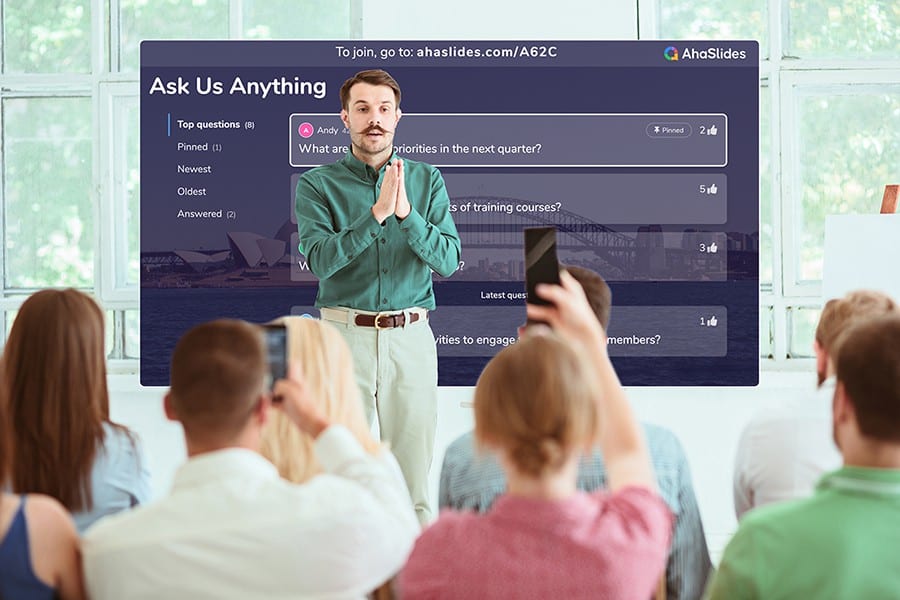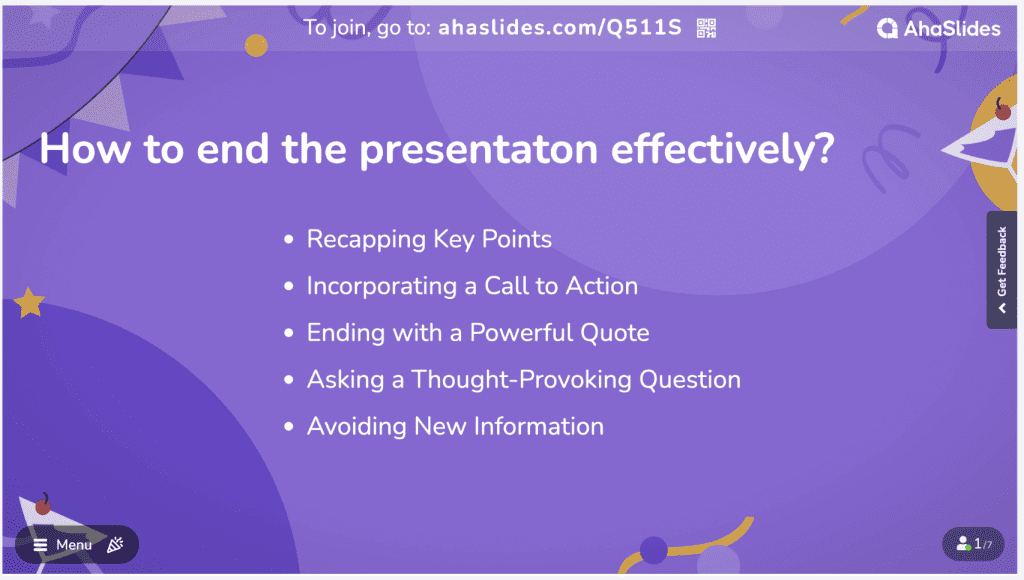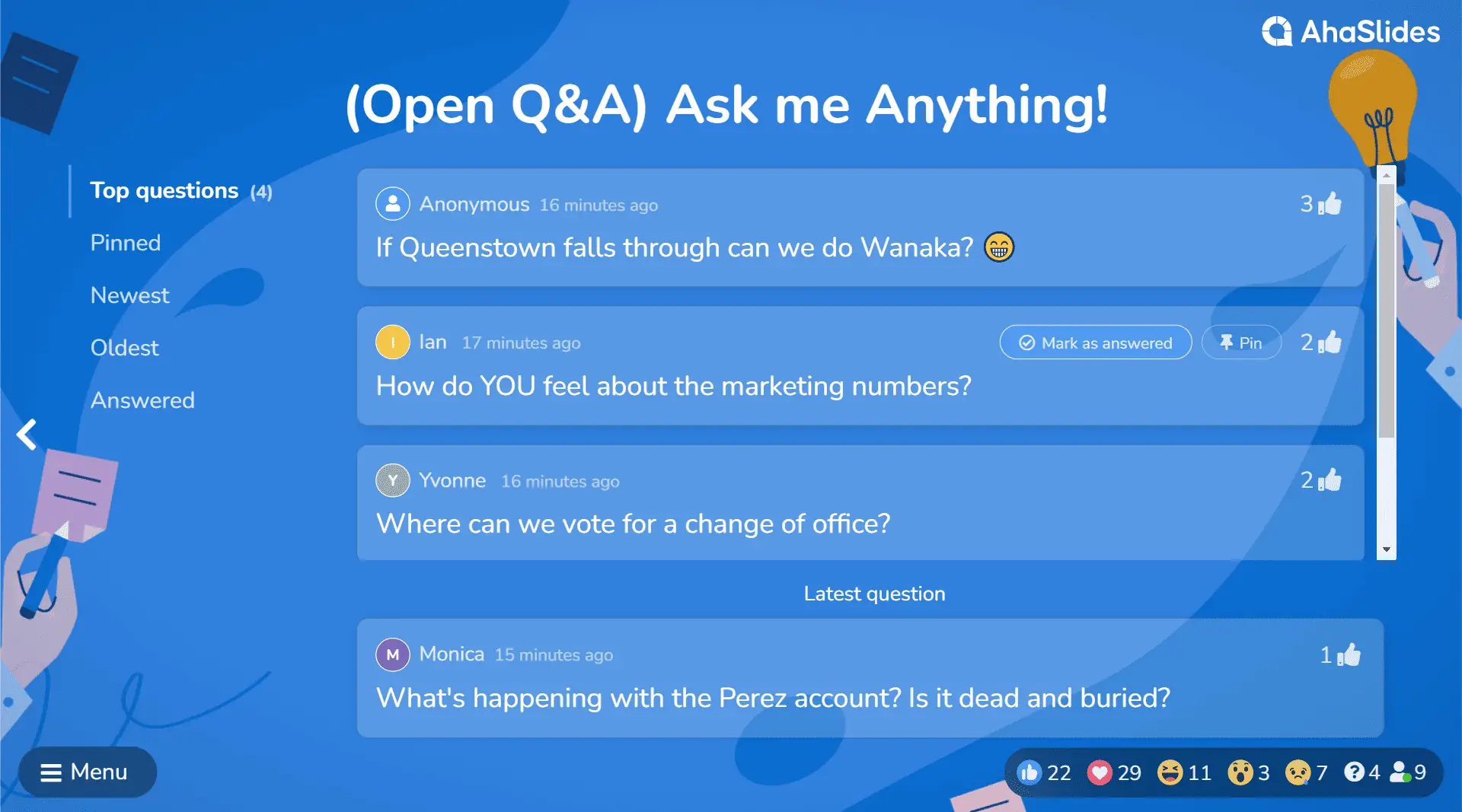How to end a presentation successfully? First impression matters all the time, and the ending is no exception. Many presentations make mistakes in putting a lot of effort into designing a great opening but forget the closing.
With that in mind, the article aims to equip you with useful ways to have a complete presentation, especially on having an impressive and engaging ending. So let's dive in!

Start meaningful discussion, get useful feedback and educate your audience. Sign up to take free AhaSlides template
Why care about your presentation's conclusion? It's not just a formality; it's critical. The conclusion is where you make a lasting impression, reinforce key points for better retention, motivate action, and ensure your audience remembers your message.
Plus, a strong conclusion reflects your professionalism and shows you've thoughtfully considered how to leave a lasting impact. In essence, it's your final opportunity to effectively engage, inform, and persuade, ensuring your presentation achieves its objectives and is remembered for the right reasons.
Effectively ending a presentation is essential to leave a lasting impression on your audience and drive your message home. Here's a step-by-step guide on how to effectively end a presentation

One of the primary functions of a conclusion is to summarize the main points you've covered in your presentation. This recap serves as a memory aid, reinforcing the key takeaways for your audience. It's essential to do this succinctly and clearly, ensuring that the audience can easily recall the core ideas. For example:
* This step also is a great place for leaving a vision. A phrase that is commonly used is: "Visualize a world where people are empowered, pursuing their passions, and breaking barriers. It's a world where motivation fuels progress and dreams become reality. This vision is within reach for all of us."
How to write the end of the presentation? A powerful conclusion that motivates your audience to take action can be an excellent idea. Depending on the nature of your presentation, this could involve encouraging them to make a purchase, support a cause, or implement the ideas you've presented. Be specific in your call to action, and make it compelling and achievable. An example of a CTA ending can be:
How to end a presentation impressively? "As the great Maya Angelou once said, 'You may not control all the events that happen to you, but you can decide not to be reduced by them.' Let's remember that we have the power to rise above challenges." Conclude with a relevant and impactful quote that relates to your topic. A well-chosen quote can leave a lasting impression and inspire reflection. For example, Julius Caesar utilized this technique when he said, "I came, I saw, I conquered." Some best phrases to use on your ending are:
How to end a presentation without using the Thankyou slide? Pose a question that encourages your audience to think or reflect on the material you've presented. This can engage the audience and stimulate discussion.
For instance: You can start a statement like: "I'm here to address any questions or listen to your thoughts. Do you have any questions, stories, or ideas you'd like to share? Your voice is important, and your experiences can inspire us all."
💡Using live Q&A features from interactive presentation tools like AhaSlides to increase your audience engagement. This tool is integrated into PowerPoint and Google Slides so you can show it to your audience instantly and update the response in real-time.

The conclusion is not the place to introduce new information or ideas. Doing so can confuse your audience and dilute the impact of your core message. Stick to what you've already covered and use the conclusion to reinforce and emphasize the existing content.
💡Check out Thank You Slide For PPT | Create a Beautifully One in 2024 to learn about creating innovative and appealing Thank-You Slides to end any type of presentation, whether it is for academic or business purposes.
In summary, an effective conclusion serves as a concise recap of your presentation, encourages your audience to take action, and refrains from introducing new information. By accomplishing these three objectives, you'll create a conclusion that reinforces your message and inspires your audience to respond positively.
The timing for concluding a presentation depends on various factors, including the nature of your content, your audience, and any time constraints. Here are some general guidelines to help you determine when to conclude your presentation:
How to end a presentation? The key is to balance the need to convey your message effectively with the available time. Effective time management and a well-planned conclusion will help you wrap up your presentation smoothly and leave a positive impression on your audience.
How to end a presentation impressively in your opinion? As mentioned, there are many ways to engage your audience until the last minute, from a strong CTA, a captivating ending slide, thoughtful Q&A session. Don't force yourself to make an ending that you might not be comfortable with, act as naturally as possible.
💡Want more inspiration? Check out AhaSlides right away to explore more innovative methods to enhance audience engagement and collaboration!
At the end of a presentation, you typically say a few key things:
To conclude a fun presentation, you can share a light-hearted, relevant joke or humorous anecdote, encourage the audience to share their own fun or memorable experiences related to the topic, end with a playful or uplifting quote, and express your excitement and appreciation for the enjoyable presentation experience.
Yes, saying thank you at the end of a presentation is a courteous and appreciative gesture. It acknowledges your audience's time and attention and adds a personal touch to your conclusion. It can be especially important in thank-you presentations and is generally a polite way to wrap up any type of presentation.